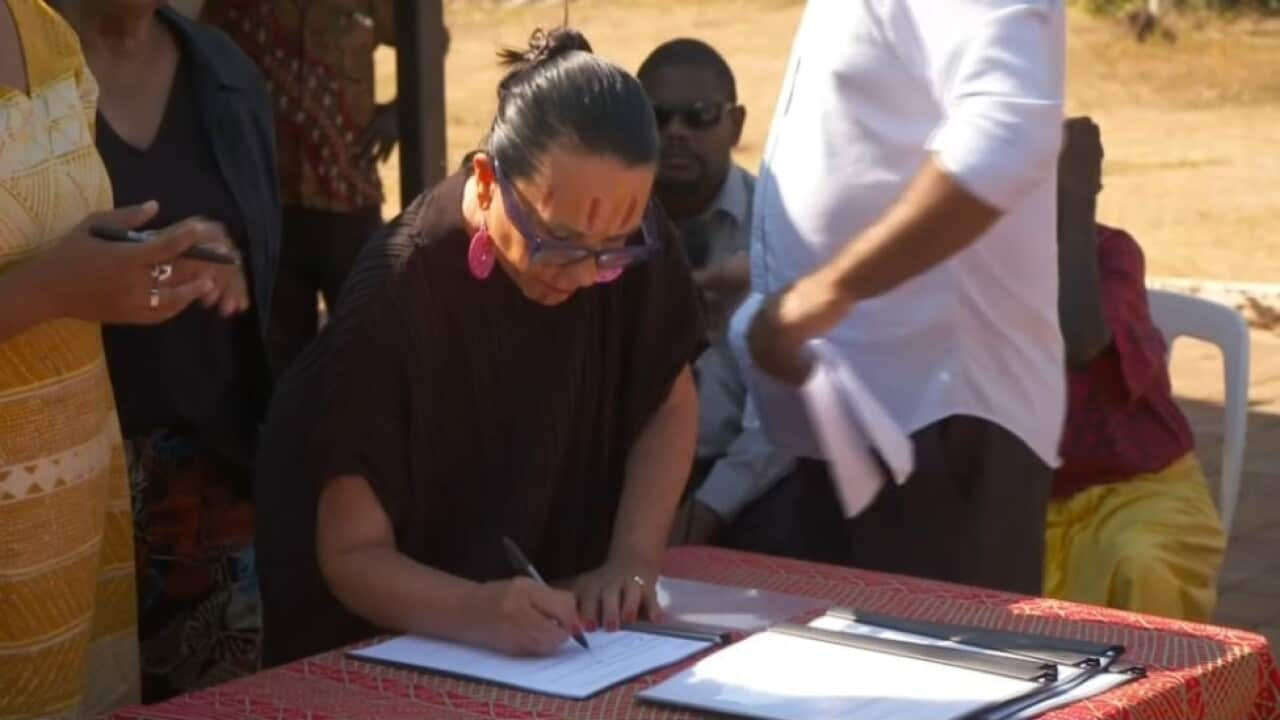TRANSCRIPT
A $4 billion remote housing agreement pledging to halve overcrowding in Aboriginal communities has been signed on the Tiwi Islands.
It marks the largest remote housing investment in the Northern Territory’s history.
For local residents like Jacinta Bennett, it’s a move into a new home they’ve spent years waiting for.
"I moved in with him 2009 and I applied for a house then because that house was rusted so 15 years I've been trying to get a house. When you walk onto our verandah it's about to fall. And then you got loose stuff in our house, tiles, and then there is just rust underneath like you can feel that house is ready to cave in so I hope they don't renovate I hope they knock that house down for the next family."
Nine people squeezed into a 3 bedroom house is how they currently live in the remote community of Milikapiti.
The family will next week move into one of seven newly built homes in Milikapiti, constructed under the previous remote housing agreement.
Jacinta Bennett says it’s a common story for many families in remote areas.
"They don't like sharing their room. There is like three in a room or four in a room and they just don't like that, sometimes if they're not in the room they will just get their mattress and sleep in the lounge room because they just feel overcrowded being in their room. You hear other people too say they need extension for room to breathe or they need a bigger house and I understand where they're coming from because it is frustrating."
Overcrowding in the Northern Territory remains 43 per cent higher than the national average.
This week, ministers met with leaders from the Territory's four leading land councils to forge a partnership they hope will halve that.
Northern Territory Minister for Remote Housing Selena Uibo says she's confident hundreds of new homes will be delivered.
"What it means for the Northern Territory is 2,700 new homes in the bush. This something we can absolutely deliver on. It's an average of 270 new homes in the bush per year for the next 10 years and if anyone is sceptical of us hitting that target, we can absolutely hit that target. Last year alone the Territory Labor government delivered on 390 new homes in the bush. This is a great aspiration which has now turned into a reality."
Last week, Northern Territory estimates heard pressure to meet previous funding deadlines meant some remote housing was not built in culturally or environmentally appropriate ways.
But Minister for Indigenous Australians Linda Burney says the new agreement will be a true partnership between governments and communities.
"Four billion dollars between the Northern Territory Government and the Commonwealth to halve overcrowding in the next 10 years. It is ambitious, it is doable and it's what's absolutely needed in the Northern Territory."
A 2018 housing review found double that amount is needed in half the time to reduce overcrowding.
Two years ago, the national audit office found the Territory government had only achieved 19 per cent of its remote housing targets.
The new agreement also includes $240 million for better repairs and maintenance for existing houses, which is a key issue for residents living in communities like Milikapiti.
And for Jacinta Bennett and her family, her new home means a new life.
"He doesn't stop smiling. My kids were screaming the house down. We're over the moon we can't wait. New life in a new house."
But with demand for new and improved housing growing faster than those being built, it’s thought to be a small step forward with a long way to go.













